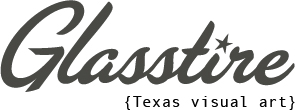March 29 - May 3, 2025
From Gallery Urbane:
“Last night I had an ecstatic dream. Suddenly before my eyes appeared fields and fields of wildflowers. They were passing by my eyes. Field after field, the meadows full of flowers in the most exquisite colors: blue, yellow, red, purple and they were all so real. I could almost smell them, like in my childhood. [. . .] I always had a very personal relationship with flowers.” — filmmaker Jonas Mekas (diary Oct. 9, 1997)
“What struck me was the revelation: in such a space, a random field of rogue wildflowers, it was impossible to feel anger. The scene and sensations in which he found himself immersed suspended anger. I felt that I wanted to focus on that for myself in the studio and turn once again to nature’s phenomenon as inspiration.” — painter Anna Kunz (email Feb. 20, 2025)
Spiral Variée: Prism (2024) Monotype with soap ground and sugar lift etching on Sekishu paper
The exhibition of Anna Kunz’s new work is titled The Ecstatic Dream from a reflection by the avant- garde experimental filmmaker Jonas Mekas. The reason for this reference is simple: Kunz created the work while in residency at Monira Foundation in Jersey City, which equally houses the archives of the Lithuanian filmmaker; more broadly the rightness of fortune is complex and deeply intuitive. From this encounter, what resonated with Kunz was the filmmaker’s approach, both diaristic and embracing chance.
It is interesting to assess in what ways Kunz’s own paintings are diaristic, given her process. “Each day I approach the painting in a ritualistic way: I choose one or two significant colors from an experience in the world,” she says. “So I’m making a document of my life in my work through color and surface.”
She is careful to note that it is not The Ecstatic Dream because she is clueless to the moment: there is an urgency in her non-urgency, as curator Jared Quinton once noted. Hers is not a utopian vision. Rather, it’s important to balance the feelings of anger and anxiety with freedom and even joy.
Anna Kunz’s studio
Spiral Variee- Prism (2024) Monotype with soap ground and sugar lift etching on Sekishu paper
Kunz looks to artists such as Anne Truitt and Joan Mitchell, who also embed time and their lives into their work. But the proximity—specifically—to a film archive suggested a way for her to think about approaching painting with certain qualities of experimental cinema: not only its diaristic qualities but also the visual elements of focus (hard or soft), chance, movement, light, the effects of flickering, glitches and other distortions, the mode of engagement and the embodiment of time.
Take the plank you see upon entering the exhibition, a support with dual significance. It is the beam on which Kunz sits or walks in the studio as she traverses the canvases she lays on the floor. The paintings’ ratios, scaled intimately to her body and its reach, represent all of her possibility; this is a way of defining her parameters; it keeps her within a system. The plank also, here, holds seven canvases which, at about 11×13 inches, are head-size. Read left to right, they seem to move. Their compositions swivel or rotate with lucid dynamism. They are also like film stills, an embodiment of non-linear, subjective progression, without a clear narrative. And they seem to “arise,” like an image in a film: the necessity is created in the sequence of ephemeral, ethereal geometric abstractions, so luminous they would be iridescent if they could quiver in time and space. The gauzy layering and transparency of tinted aureoles thrum.
‘Swan Attack‘
Like in a film, time is a dimension. Linear time may belong to film, yet Kunz’s abstract paintings render almost tangible that embedded notion of time. It is the time of perception. Once you become more intimately involved with the surface and color, an optical experience occurs. There is a drift or dérive from the quotidian. This drifting is akin to film but also memory—the closest thing to the experience of being immersed in something beautiful and poetic without language. Kunz invites the viewer into the open space of abstraction, an invitation to step out of the familiar. Thus, an invitation to optimism.
Though diaristic, Kunz’s work is far from restrictively or solipsistically personal. We hover on the brink of bodilessness—and yet corporeality remains in the body as boundary and measurement. We are tethered, measured and bounded by the body in ways we feel and intuit. We are held—and liberated —too: by her formal response in this case to Mekas’ equally formal response to the real. We see her reading a fellow artist and human reading a field of flowers which is essentially reading the world. All of this within a continuity. It’s a cinema that is universal. In its participatoriness, it is feminist. In its vulnerability, care, and optimism, it is a balm.”
Reception: April 9, 2025 | 6–8:30 pm
2277 Monitor St.
Dallas, 75206 TX
(432) 386-0590
Get directions

